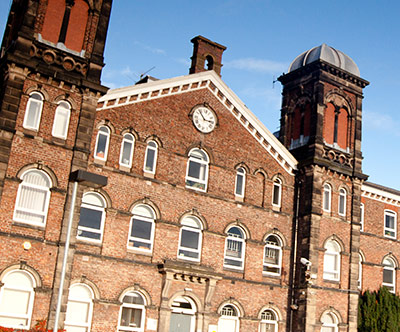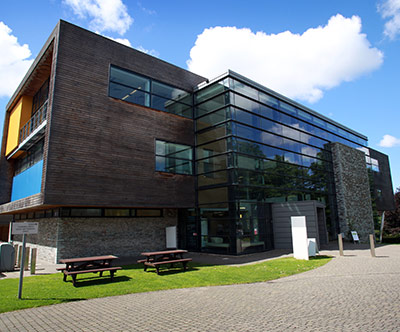St Martin's College
The Lancaster campus of the University of Cumbria started life as a barracks for the King's Own Royal Regiment and it was this association which gave the teaching college its name - St. Martin's - after a Roman soldier who converted to Christianity.
With the kind permission of the Museum for the King's Own Royal Regiment we have a gallery of images from their archive and a collection from our own.
The King’s Own Royal Regiment vacated the barracks and the site was purchased by the Church of England. Former armouries, barracks and other buildings were converted and others demolished to be replaced by new buildings designed by Charles Pike.
Post-war review of teacher training led to the instigation of Lancaster College of Education 1962. The first intake of 89 students (supported by 13 staff) was in 1964.
From the start, the college planned to teach degrees as well as Certificates of Education and pioneered the four year BA Hons with QTS. By 1966 the college was teaching PGCE students.
The college developed courses in nursing and later radiography, occupational health, social work and continuing professional development courses for health professionals. Strong relationships were forged with NHS trust training departments, and many health professionals can be seen proudly wearing both St. Martin’s and University of Cumbria badges on their uniforms to this day.
The college developed courses in humanities, arts and sport, and a mini building boom ensued in the late 1990s with the development of the Sports Centre, Humanities building, Hugh Pollard Lecture Theatre and new accommodation.
In the late 1990s St. Martin's took over the management of Charlotte Mason College in Ambleside. The London campuses followed, strengthening the emphasis on teaching.
The acquisition of the former hospital buildings at Fusehill Street in Carlisle saw the expansion of health, teaching, arts, humanities and business courses in Cumbria.
The Carlisle campus developed with new halls of residence, a sport centre and in 2006 the Learning Gateway building.
In 2006 the College embarked on its journey to secure University Title and Taught Degree Awarding Powers (TDAP). Following review by the Quality Assurance Agency the College received approval from the Privy Council on 10th July 2006 in respect of TDAP.
The College then as part of the establishment of the University of Cumbria applied for university title and a change in name after gaining Taught Degree Awarding Powers (TDAP). The Privy Council confirmed its approval and change of name to University of Cumbria with effect from 1st August 2007.





